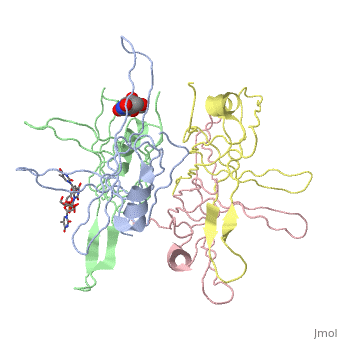Single-stranded DNA-binding protein
Single-stranded DNA-binding protein (SSB) binds to single-stranded regions of DNA (ssDNA) to protect it from annealing, prevention of secondary structure formation and digestion. SSB binds to DNA in a sequence-independent manner. The binding of SSB enables processes like replication, DNA repair and recombination to occur. SSB can form complexes with specific genome maintenance proteins helping their activities[1].
See also Single stranded binding protein. 3D Structures of single-stranded DNA-binding proteinSingle-stranded DNA-binding protein 3D structures
|
| ||||||||||
ReferencesReferences
- ↑ Marceau AH. Functions of single-strand DNA-binding proteins in DNA replication, recombination, and repair. Methods Mol Biol. 2012;922:1-21. doi: 10.1007/978-1-62703-032-8_1. PMID:22976174 doi:http://dx.doi.org/10.1007/978-1-62703-032-8_1
- ↑ Ishibashi T, Kimura S, Furukawa T, Hatanaka M, Hashimoto J, Sakaguchi K. Two types of replication protein A 70 kDa subunit in rice, Oryza sativa: molecular cloning, characterization, and cellular & tissue distribution. Gene. 2001 Jul 11;272(1-2):335-43. PMID:11470540 doi:10.1016/s0378-1119(01)00555-8
